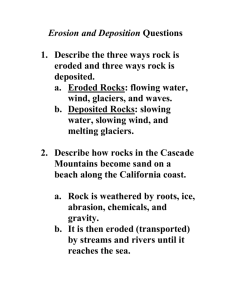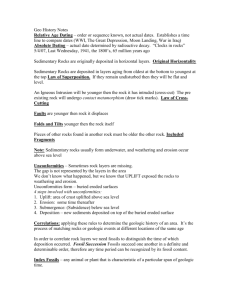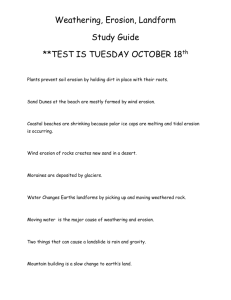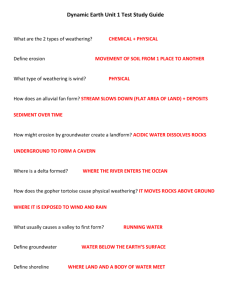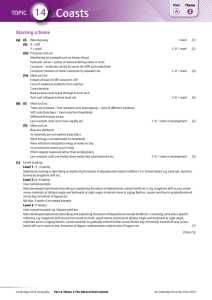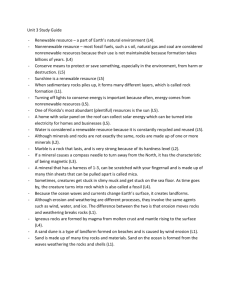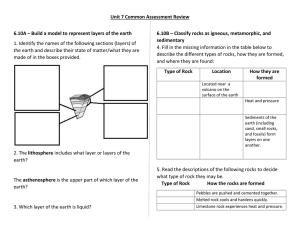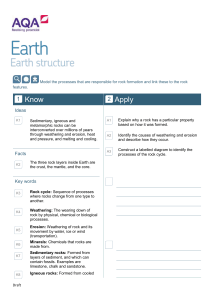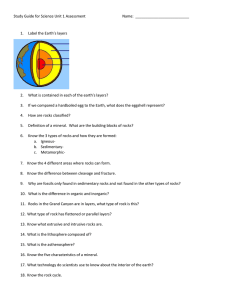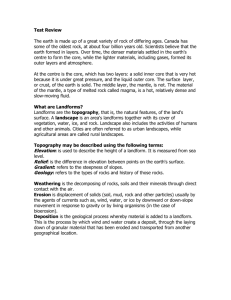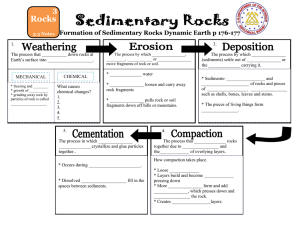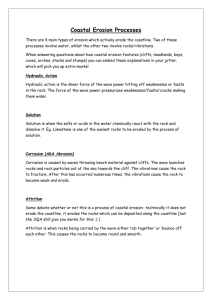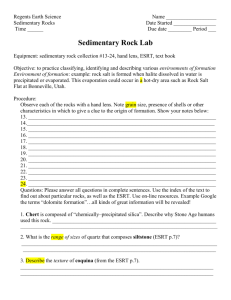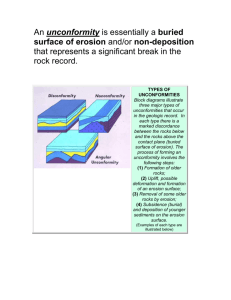Name Date ______ Be able to write about John Wesley Powell and
advertisement
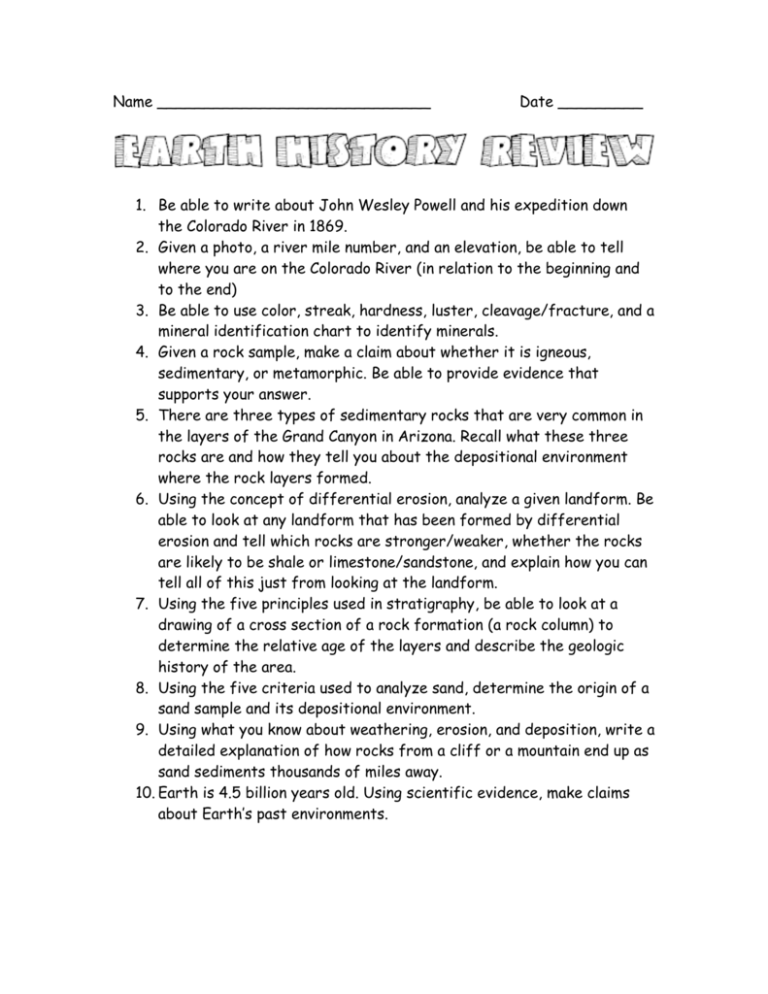
Name _____________________________ Date _________ 1. Be able to write about John Wesley Powell and his expedition down the Colorado River in 1869. 2. Given a photo, a river mile number, and an elevation, be able to tell where you are on the Colorado River (in relation to the beginning and to the end) 3. Be able to use color, streak, hardness, luster, cleavage/fracture, and a mineral identification chart to identify minerals. 4. Given a rock sample, make a claim about whether it is igneous, sedimentary, or metamorphic. Be able to provide evidence that supports your answer. 5. There are three types of sedimentary rocks that are very common in the layers of the Grand Canyon in Arizona. Recall what these three rocks are and how they tell you about the depositional environment where the rock layers formed. 6. Using the concept of differential erosion, analyze a given landform. Be able to look at any landform that has been formed by differential erosion and tell which rocks are stronger/weaker, whether the rocks are likely to be shale or limestone/sandstone, and explain how you can tell all of this just from looking at the landform. 7. Using the five principles used in stratigraphy, be able to look at a drawing of a cross section of a rock formation (a rock column) to determine the relative age of the layers and describe the geologic history of the area. 8. Using the five criteria used to analyze sand, determine the origin of a sand sample and its depositional environment. 9. Using what you know about weathering, erosion, and deposition, write a detailed explanation of how rocks from a cliff or a mountain end up as sand sediments thousands of miles away. 10. Earth is 4.5 billion years old. Using scientific evidence, make claims about Earth’s past environments.

